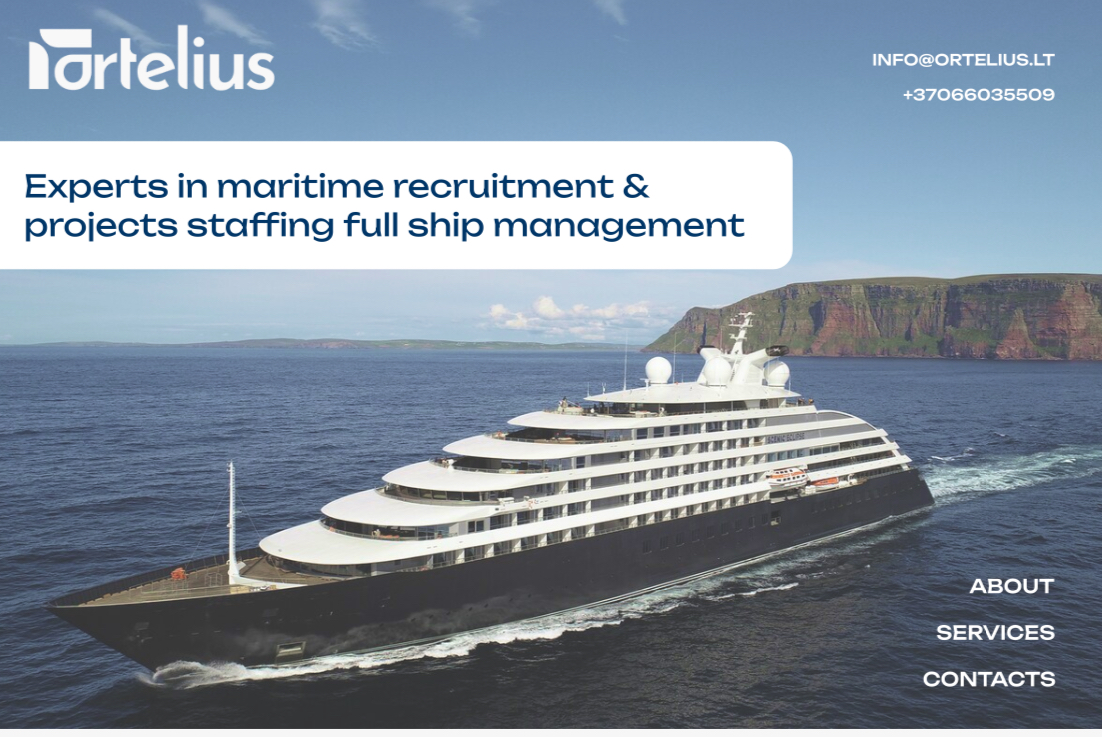Major League Rugby is back and stronger than ever ahead of it’s 8th season. America’s premier rugby … [+] competition will now be on ESPN.
Major League Rugby (MLR) CEO Nic Benson is looking forward to the upcoming season. MLR kicks off its eighth season on Saturday, February 15 at 6 PM EST with five matches. Rugby fans can now watch America’s professional rugby competition on ESPN+.
The “worldwide leader in sports” is MLR’s new home for the foreseeable future. In early February, the two entities agreed to bring “the highest level of professional rugby in the United States to ESPN platforms.”
ESPN Broadcast Deal
Per the multi-season agreement, all MLR regular season and playoff games will air live on ESPN+, with select matchups presented on ESPN2. Like all other sports on ESPN’s OTT streaming service, full games and highlights will be available for replay once the live match has ended. Rugby fans will be able to find the same content on the MLR-owned The Rugby Network after a 72-hour delay.
The North American competition will also be shown in sub-Saharan Africa as part of the broadcast agreement, meaning the rugby hotbed of South Africa, and other growing markets, will have TV access to the U.S.’s premier rugby competition.
Tim Bunnell, ESPN’s SVP of Programming and Acquisitions recognizes the importance of platforming MLR on ESPN. After the announcement, he said, “Major League Rugby has built a strong foundation as the premier professional rugby league in North America, and we’re thrilled to be part of its next phase of growth.”
Previously MLR was shown on Fox Sports and the Rugby Network.
MLR 2025 Season Expectations
Benson is extremely confident ahead of the new season. He insists that “rugby union is in a very good place in the U.S.,” adding that “MLR is a critical piece of that.” The competition has eleven teams, down from twelve the year before, but in strong markets with growing fanbases.
During the 2024 season, MLR viewership grew more than 25% year over year. Benson says, “We are hyperfocused on increasing our audience and introducing rugby to more American sports fans every year. This relationship with ESPN will give us an opportunity to supercharge that growth.”
But growing a challenger sport in the most competitive sports market in the world is no simple task. MLR has already seen its ups and downs, with several clubs, like the L.A. Giltinis and Rugby New York, folding. Benson says, building a new league in the U.S. is “a heavy lift” that is “difficult and expensive.” Sometimes plans fall through and ownership groups cannot continue funding clubs. Still, Benson feels this will be MLR’s strongest season yet, noting, “Our growth has been much faster than expected.”
On the field, fans can expect a fast, physical game. MLR has begun to develop its own style, blending the athleticism of Australia and New Zealand’s Super Rugby with the extreme physicality of the URC and English Premiership.
MLR’s executives are actively encouraging an open game in the hopes of appealing to American fans. According to Benson, “feats of highly coordinated athleticism” draw in new fans. Every sports fan loves to see something that seems practically impossible, and rugby is full of plays like these, be they one-handed offloads in contact, diving tries in the corner, or a step (juke) that breaks the defender’s ankles, allowing the attacking player to run off and score.
Rugby union suffers from a low ball-in-play percentage compared to other major sports. At the 2023 Rugby World Cup, the average ball-in-play time was 34 minutes and 18 seconds out of an 80-minute game. MLR sits in the same range averaging around 33 minutes in play. In American football, that number is 54 minutes.
With this in mind, MLR will be trialing several new laws this season to speed up play and keep the ball on the field. These include the removal of the scrum (the slowest element of the game) for a knock-on or a throw forward into touch, and a free kick rather than a scrum for a failure to play the ball (delay of game) or an unsuccessful maul. MLR will also trial the 20-minute red card replacement rule made popular by Super Rugby.
The 18-week season will culminate on June 28 with the MLR Championship game. The two-time defending champion New England Free Jacks are favorites to retain the title but will face a stiff challenge from last year’s semifinalists San Diego Legion, Old Glory DC, and the Seattle Seawolves. Meanwhile, RC Anthem will continue to help develop American players in a competitive environment.
Growing Rugby in the U.S.
In its first seven seasons, MLR has done an exceptional job of cracking a very difficult sports market. While rugby’s history in the U.S. goes back to the late 1800s, the average American has little to no contact with the sport. MLR is filling that void by bringing rugby back to most of America’s major markets.
Rugby’s appeal is evident. In 2024, the MLR Championship game had a record crowd of more than 12,000 people. Attendance as a whole was up 13% last season year-on-year and the Utah Warriors set a regular season attendance record of 10,000 fans. Viewership also increased by 26% from 2023 to 2024 and The Rugby Network saw a 55% subscriber increase.
With 11 strong clubs, MLR CEO Nic Benson expects a strong competition in 2025.
The league also expanded into Miami and Charlotte, establishing two new franchises, one of which, RC Anthem (Charlotte), focuses exclusively on developing American rugby players. Unlike the other teams, Anthem is co-owned by World Rugby and MLR. It is a talent accelerator that gives young American talent much-needed opportunities in the professional game. Time on the field is the only way players develop the skill sets required to thrive under pressure. Anthem also shows that American talent can begin to fill up roster spots in the U.S. league. Until now, MLR has relied on foreign players coming to the U.S. for the homestretch of their careers, and on players who were backups in their home leagues but could start in the U.S.
Gary Gold, the former USA Men’s National Team Head Coach, emphasized the need for more U.S. talent in a recent interview with former Scotland player Jim Hamilton. Gold noted that during his time as USA Eagles Head Coach, he made a depth chart of U.S. eligible rugby players based solely on the MLR rosters. Out of the then 12 teams, Gold said he could only find one number ten, and no 13s or locks, something unimaginable for top-tier rugby nations.
MLR is trying to funnel more kids into rugby by familiarizing them with the game and introducing the sport in schools. Imagine Rugby, MLR’s grassroots non-profit “puts a rugby ball in their hands,” according to Benson. But they don’t only focus on children: just last week, Imagine held a program in Houston that introduced over 500 educators to rugby.
Rugby has a strong presence in colleges and universities around the country, but it is mostly offered at the club level, meaning there are few to no scholarships for the sport. This is another key factor for elite athletes deciding whether or not to play rugby or another sport, and an area where rugby must level-up to compete properly. To attract the best talent in the U.S., rugby needs to find a way to offer scholarships to athletes.
Scholarships not only provide athletes with a meaningful education, they give them a platform to play the game during some of their most critical years of physical and mental development. Gold notes that one of the issues he faced as a coach was athletes trying to become rugby players at a later age. After college, players are already in their 20s, and building rugby’s “very definitive skill set” proves a challenge for most.
Gold proposes a crossover school for young men and women ages 15-17 so that they can learn rugby at a younger age and make the jump into the elite tiers of the sport more successfully. He argues that other countries with fewer resources, like Chile and Uruguay, have done this very successfully in recent years. Chile’s success came at the cost of a place in the 2023 Rugby World Cup for the U.S. The South Americans beat the Eagles in a two-game playoff for the final qualification spot.
The other major challenge facing rugby in the U.S. is sheer size. MLR is doing a good job of capturing major markets, but there is a lot of uncovered territory where rugby has no professional presence. Unlike rugby’s other hotbeds like New Zealand, Ireland, and South Africa, travel and accommodation are prohibitively expensive in the U.S. Away games involve long-hour flights as opposed to shorter train or bus rides. Rugby’s popularity remains siloed in specific areas of the country with limited connectivity.
That is why building a relationship with a premier broadcaster is so important. With airtime on ESPN, MLR can reach casual viewers and spread the sport to every corner of the country. On that note, Benson says, “We are hyperfocused on increasing our audience and introducing rugby to more American sports fans every year. This relationship with ESPN will give us an opportunity to supercharge that growth.”
This sentiment is echoed by William Mao, Octagon’s SVP of Media Rights Consulting, who works with ESPN on behalf of MLR. After the deal was announced he said, “Already the most-watched professional rugby league in the United States, MLR is the primary vehicle pushing the sport forward in our market. And now with a presence across ESPN platforms, the league will be even better positioned to fuel rugby fandom in the U.S. ahead of the 2031 Rugby World Cup.”
Infrastructure
To make rugby more attractive to the average U.S. sports fan, and to take the step from challenger to established entity, Benson believed MLR needs to become “one of the best professional rugby leagues in the world.” In his eyes, this means having the highest quality of play, strong viewership, and excellent attendance.
As things stand Benson doesn’t feel that MLR is that far off from the major European leagues and Super Rugby. He references Rugby FC Los Angeles’s preseason match against the Fijian Drua as proof that the gap in quality of play is closing. As he said, “L.A. went and challenged themselves against a team that’s in one of the best competitions in the world and they did well. It was close.” He added that “it’s not crazy to think that in a year or two that [result] could go the other way.”
Where there is room for improvement is in facilities and participation. Benson is focused on building an entire ecosystem of world-class infrastructure that is capable of attracting the best talent and hosting the biggest tournaments of all, the Olympics in 2028 and the Rugby World Cup in 2031 and 2033.
At the time of writing, two MLR teams have functional control over their facilities: Houston, which built its rugby-specific installation in 2019, and New England. Benson notes that facility control is “critical for scheduling” and for creating a positive fan experience. However, he is proud of certain venues MLR has at its disposal, like UCLA and SeatGeak stadium in Chicago.
The next wave of infrastructure is already being planned. The Seattle Seawolves will be moving to a new facility in 2027, and Benson says “NOLA Gold has big stadium plans in 2026,” as they look to move out of the baseball stadium they currently play in.
With league attendance and viewership increasing, a stronger broadcast deal in place, excellent ownership groups, and teams beginning to break even, there is much positivity about MLR’s growth. Now, the players must continue delivering thrilling action so that rugby becomes the next sport young Americans want to play.











